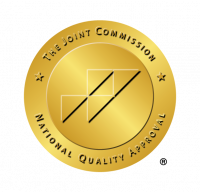Home » Alcohol » How To Stop Drinking » Post-Acute Withdrawal Syndrome (PAWS)
Understanding Post-Acute Withdrawal Syndrome (PAWS)
Here’s what you need to know about this common early-recovery phenomenon, what to expect, and how to navigate it successfully.
Looking for support in changing your relationship with alcohol?
Many people in recovery, along with their loved ones, believe that once they are “clean” and past the acute withdrawal phase they will feel great and life will return to normal.
Unfortunately, for many, there is more to the story. While things are definitely on their way to being better once withdrawal is over, many people experience something called “post- acute withdrawal syndrome,” or PAWS. This may include increased anxiety, depression, insomnia, and cognitive difficulties—and is a common reason why people relapse.
Although this can be a frustrating reality for people who are fighting to stay sober, the good news is there are some excellent supports and strategies to help you through. Informing yourself about PAWS can help prepare you to manage it productively, and get through it to a happier, healthier self.
Table of Contents
What Is PAWS (Post-Acute Withdrawal Syndrome)?
What does PAWS mean? Post Acute Withdrawal Syndrome (PAWS) is a condition that can last for weeks, months, or longer, after discontinuing the use of a substance.
PAWS is defined by symptoms often found in mood and anxiety disorders, such as mood swings, insomnia, and elevated anxiety even in the absence of noticeable stimulus.
An estimated 75 percent of people in recovery from alcohol use disorder (AUD) experience the syndrome to some extent.1
It is well known that the initial withdrawal from alcohol or other drugs can cause everything from physical discomfort to life-threatening conditions. But people are often unaware of the lingering effects of withdrawal, which can present a major challenge to maintaining sobriety.

How Long Does PAWS Last?
In essence, there are two phases of the withdrawal process. Once detox and acute withdrawal are completed, the second phase (PAWS) begins.
Depending on the duration and intensity of one’s substance abuse, PAWS can last for weeks or months (sometimes longer), and it occurs even after all traces of the substance have left the body and brain.
What Causes Post-Acute Withdrawal Syndrome?
The symptoms of PAWS are part of the process of your brain readjusting to the absence of alcohol and drugs. During chronic substance abuse, the brain adapts to having the substance in your system by adjusting its sensitivity to, and production of, certain neurotransmitters. When you become abstinent from that substance, your nervous system takes some time to stop overcompensating.
In the case of alcohol, your brain must adapt to no longer using alcohol to calm your system down. Until you begin producing enough of your own calming neurochemicals, you will likely feel more anxious than normal, and have a harder time winding down. The brain’s capacity to deal with stress may also be reduced by prolonged substance abuse, and the related experience of withdrawal.2
PAWS symptoms most commonly occur after a withdrawal period from alcohol, benzodiazepines, and opioids, but have also been known to surface after quitting other psychoactive substances.
What Is “Dry Drunk Syndrome”?
If you dislike the term “dry drunk,” you are not alone. In addition to sounding contradictory, it sounds derogatory. So, what does “dry drunk” mean?
The term originated with Alcoholics Anonymous, and refers to someone who no longer drinks, but hasn’t dealt with the underlying issues that initially led to the addiction. These individuals maintain the same behaviors and self-defeating thought patterns of an “alcoholic.”
Post-acute withdrawal syndrome is an alternative, less judgmental way of explaining this phenomenon, and may be a better term to use than “dry drunk.” Changes in brain chemistry from long-term alcohol use mean that most people will find it challenging to change their thinking patterns and behavior. Struggling with this doesn’t necessarily mean lack of effort, nor does it mean you are failing at recovery.
Symptoms of Post-Acute Withdrawal Syndrome
Symptoms of PAWS are known to fluctuate in severity. They may even disappear altogether, only to resurface down the road. Common post-acute withdrawal symptoms include:
- Irritability
- Anxiety or panic
- Depressed mood
- Cognitive difficulties such as learning, problem solving, and memory
- Difficulty maintaining relationships
- Craving the substance(s)
- Apathy or pessimism
- Sleep disturbances
- Increased sensitivity to stress
- Obsessive-compulsive behaviors
- Physical pain or coordination problems
- Loss of libido
These symptoms tend to worsen when under stress, but can also occur for no apparent reason.
Treatment for PAWS
Because the symptoms of PAWS can continue for months or years, treatment is generally administered over an extended time period. Acamprosate is one drug commonly used to treat the issue, as it can help restore imbalances that cause anxiety after quitting alcohol.
Other drugs, such as gabapentin, also have a good track record. In addition, most patients receive individual or group psychotherapy to learn coping strategies for their symptoms.
PAWS can be challenging due to the unpredictable fluctuations of symptoms, but the combination of drugs and therapy may bring some relief.
Coping Strategies for PAWS Symptoms
Successful management of withdrawal symptoms may help you feel better physically and emotionally, boost your self-esteem, and ultimately reduce your risk of relapse. Here are some tips for managing post-acute withdrawal syndrome:
Educate yourself about PAWS
Understanding the condition will help you prepare for unexpected symptoms. It is possible to be feeling fine, and then suddenly get hit with symptoms such as mood swings or fatigue.
Take care of your health
Strive for optimal health by eating nutritious meals, getting adequate sleep, and exercising regularly. Exercise can boost your mental health as well.
Write things down
If you are experiencing memory difficulties, keep a notepad or use your smartphone for daily reminders of appointments, tasks, and any other important information.
Express your emotions
Talking about your feelings and struggles with family and friends can be very comforting. They can offer reassurance and perspective. Consider keeping a journal as another way to vent emotions.
Practice self compassion
Treat yourself kindly by using encouraging self-talk; acknowledge your progress and growth. Utilize mindfulness, meditation, deep breathing, and other relaxation techniques.
Avoid triggers
Distance yourself from people, places, and events that may trigger cravings for the substance. Avoid high-anxiety situations.
Plan fun activities
Connect with a supportive friend for lunch, watch a movie, read a book, go for a hike, or rediscover a hobby. Do what brings you joy!
Support for Post-Acute Withdrawal Syndrome
Post-acute withdrawal syndrome can cause a great deal of frustration. People often work so hard to get sober; continuing to experience physical and emotional discomfort can be discouraging and irritating.
The good news is, PAWS does eventually resolve itself. And the more you understand what symptoms to expect, the better you’ll be able to manage them. Always remember: these symptoms are not personal failings, but rather a result of post-acute withdrawal syndrome.
If you or a loved one are struggling with PAWS, help is available. Ria Health offers regular coaching sessions and prescription medications from the convenience of a mobile app. No office visits are required! Create an account with us today to get started.

References[+]

